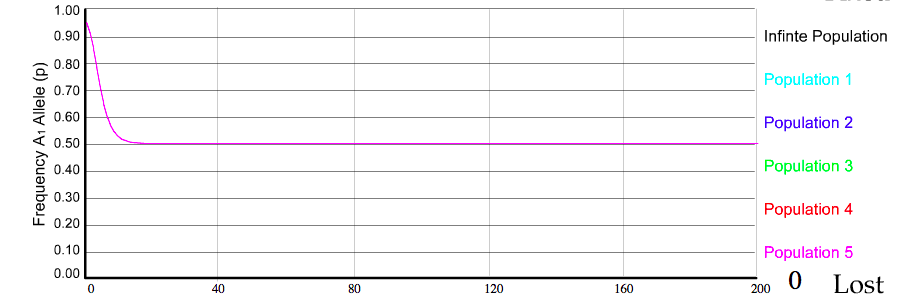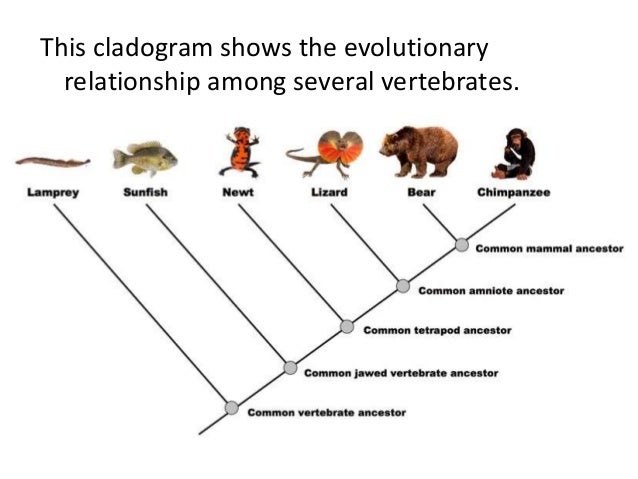This week in AP Biology, we started with a brand new lab involving investigating microevolution by using a population generation program. Through this lab we disturbed each of the 5 standards of Hardy Weinberg equilibrium in order to see how the population evolves in response. I decided to experiment with the heterozygote advantage within a population, which revealed their dominant and recessive allelic equilibrium. This lab is using a quantifying manner to approach Big Idea #1 by using our knowledge of the 5 standards of Hardy Weinberg equilibrium to experiment and visualize what is happening within the population.

In class, we discussed 2 new major ideas: speciation and classification. A species is a population whose members can interbreed and produce viable and fertile offspring. Speciation is created by a series of evolutionary processes that result in the reproductive isolation of a population. Darwin called it the “mystery of mysteries”. There are two types of speciation: Allopatric and Sympatric.
Allopatric is a population isolated due to physical barriers. An example of this would be when the Grand Canyon formed, it separated one species of squirrel. The squirrels evolved on their side and now no longer recognize one another as a mate. An example of allopatric speciation is the separation of marine creatures on either side of Central America when the Isthmus of Panama closed about 3 million years ago, creating a land bridge between North and South America. Nancy Knowlton of the Smithsonian Tropical Research Institute in Panama has been studying this geological event and its effects on populations of snapping shrimp. She and her colleagues found that shrimp on one side of the isthmus appeared almost identical to those on the other side — having once been members of the same population.

On the other hand, sympatric speciation is when a species remains in the same physical area but become reproductively isolated from one another. For example, gene flow from one part of the population of flies stops from the other when they choose to lay their eggs in different locations. These are all ways a species can be isolated from one another genetically (isolationism). However, there can also be a hybrid population which is caused by gene flow between two species. A real life example of this would be when 200 years ago, the ancestors of apple maggot flies laid their eggs only on hawthorns — but today, these flies lay eggs on hawthorns (which are native to America) and domestic apples (which were introduced to America by immigrants and bred). Females generally choose to lay their eggs on the type of fruit they grew up in, and males tend to look for mates on the type of fruit they grew up in. So hawthorn flies generally end up mating with other hawthorn flies and apple flies generally end up mating with other apple flies. This means that gene flow between parts of the population that mate on different types of fruit is reduced.
Secondly, we learned how to classify species using the old school method and the new school method. The old school method was created by Carl Linnaeus based off of the hierarchy of life. This was based on domain and kingdom. There were three domains: Bacteria, Eukarya, and Archaea and five kingdoms: Monera, Protista, Fungi, Plantae, and Animalia. This system proved to be inefficient because there were too many different species that were interrelated to one another and this discounted everything we could not see (microscopic) as one species. The new school method was used DNA to find relativity to other animals. We could now look deeper than the surface value of physical appearance and see the genetic code of the species by using cladograms (which show us how they evolved from one common ancestor).

To create a cladogram, you must:
- Determine how many species have a particular characteristic in common
- Group the species so that the most number of species have the most characteristics in common
- Apply the rules of maximum parsimony and likelihood
- Sort the types of groups within a cladogram into monophyletic (all descendants of 1 common ancestor), paraphyletic (some he descendants have 1 common ancestor), or polyphyletic.
This big idea showed us how exactly species evolve, and from who/what original ancestors. I would love to explore further spectrums of speciation and classification by being able to sort our own species and classify them in a program or “game”.
Websites
